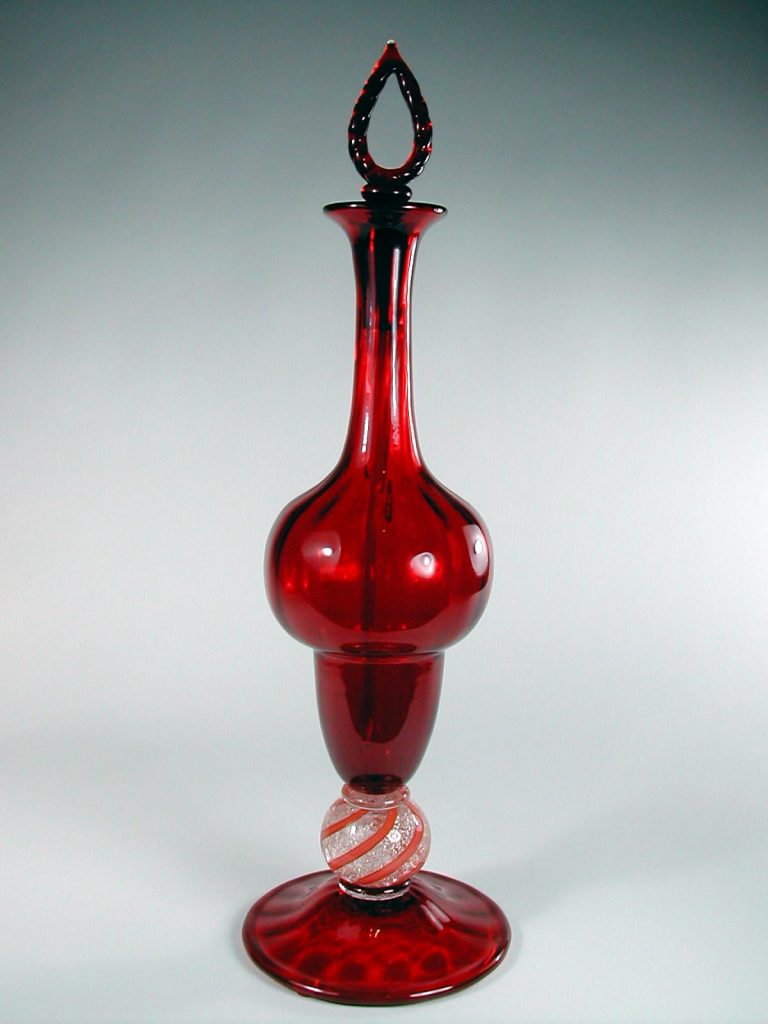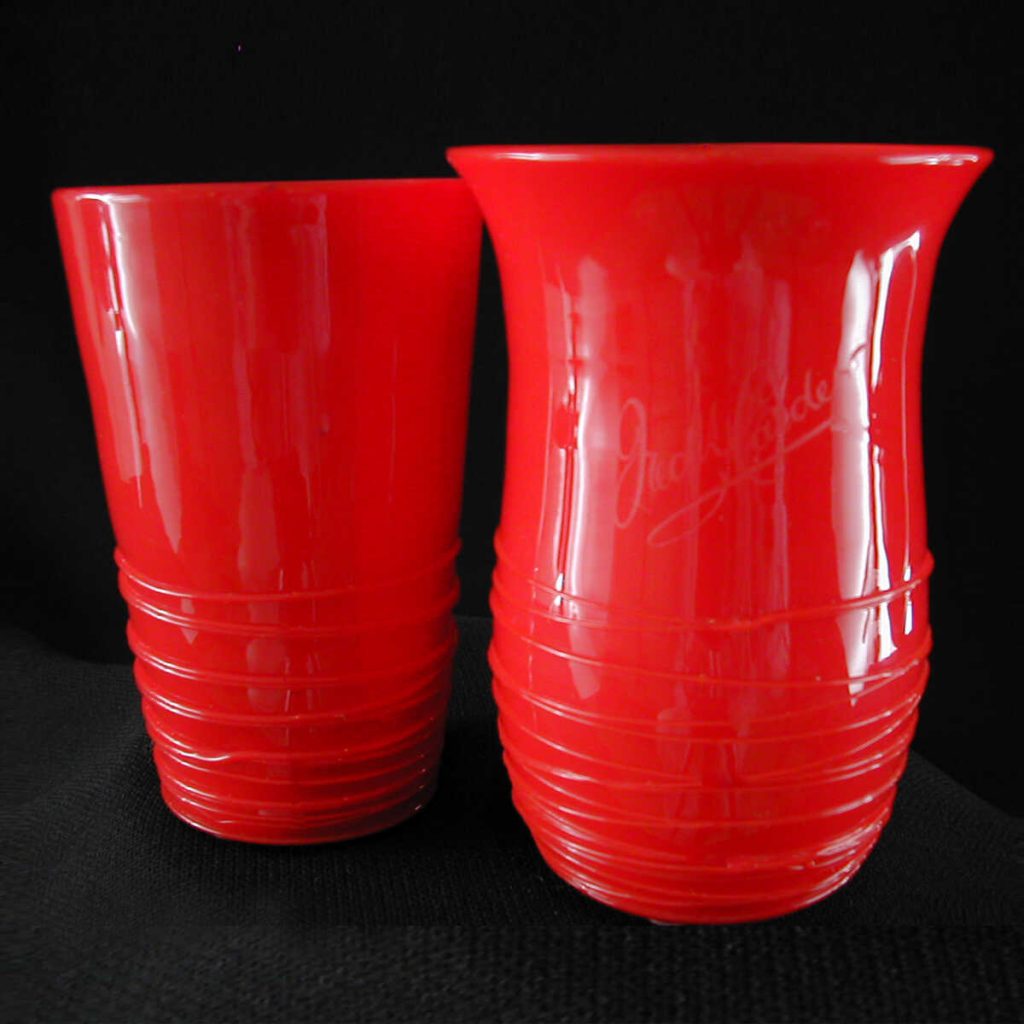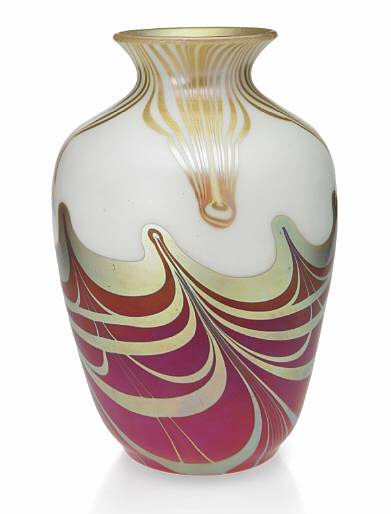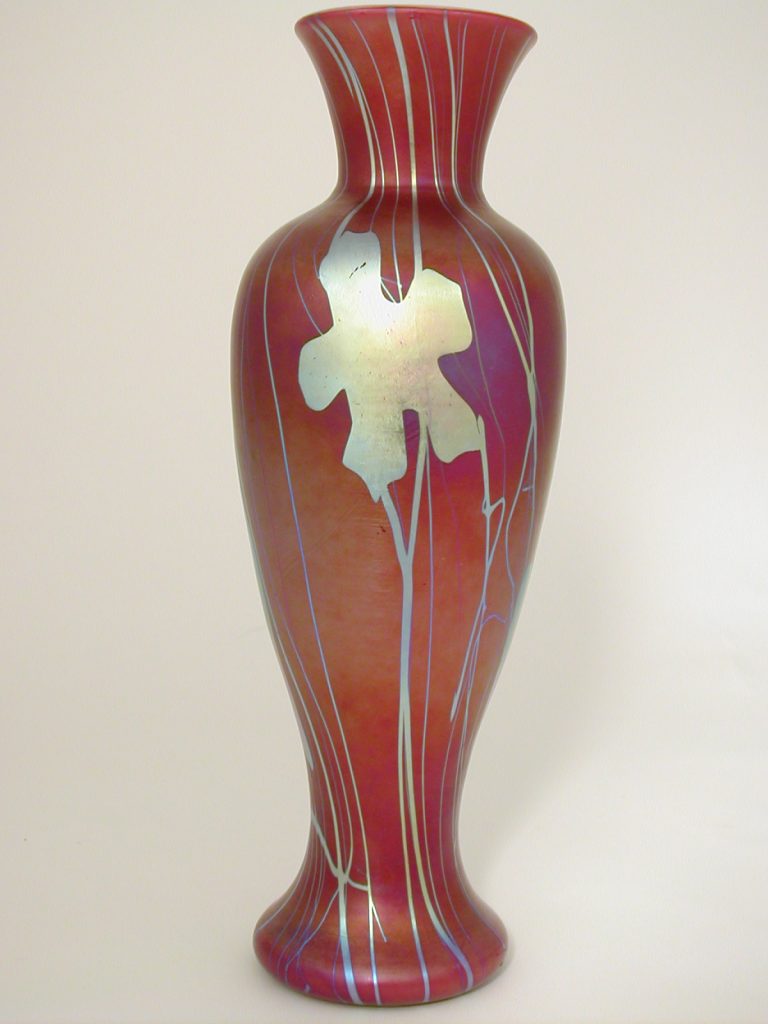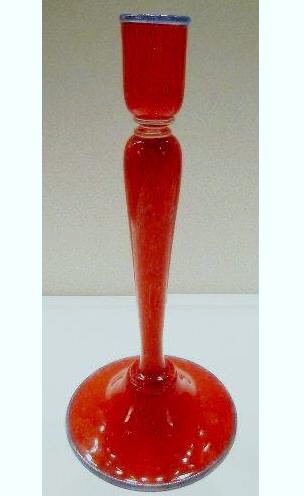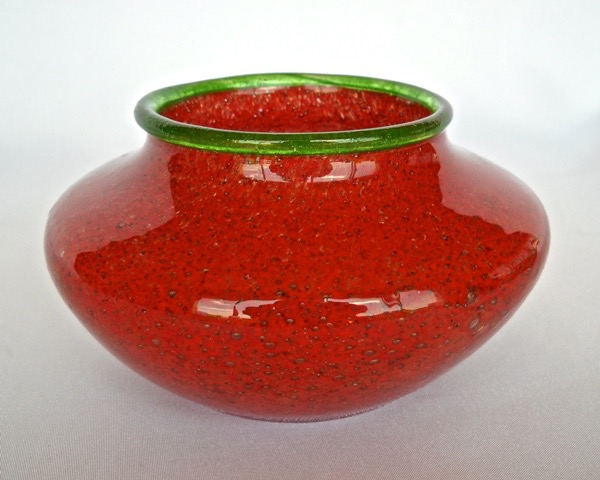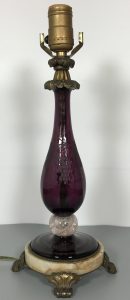Roses are Red and Carder Steuben is Too!
Feb 14, 2025
Issue 3740
Why not celebrate Valentine’s Day admiring Frederick Carder’s red creations? We often think of Selenium, Red Aurene or Rouge Flambe when reds come to mind. In Paul Gardner’s book, Selenium is referred to as Selenium Ruby, which is a rich blood red sometimes shading to almost a garnet color in heavier pieces. This red glass was made by the addition of cadmium selenide plus zinc sulfide to the glass batch. Rouge Flambe was produced by the addition of selenium and cadmium sulfide to the glass batch. The Rouge Flambe was difficult to produce and particularly vulnerable to breakage caused by strains within the glass. As a result of production difficulties, Rouge Flambe was made only for about two years (probably 1916 and 1917).
The name Red Aurene is rather broadly applied to the group of glass objects usually made from calcite or alabaster glass either partially or entirely cased with Gold Ruby, and having applied Aurene decorations usually in feather motifs or trailed threads often combined with floral and leaf forms. There are also a few solid Ruby glass pieces with Aurene trailed thread decorations and the entire surface slightly iridized that are in the Red Aurene classification. Most Red Aurene pieces were made during the first few years of Steuben factory operation.
But there are other reds that are also special, like Red Cintra. What a beautiful color! There are not many Red Cintra pieces in the Shape Gallery. (If anyone has a piece, please send a picture to our webmaster at webmaster@steubenglass.org to add to our Shape Gallery.) Does anyone know whether selenium or copper was used in the glass powders that make Cintra? It was probably Selenium. According to Gardner, when Carder was asked about ruby glass he remarked Copper Ruby was all right for signal lights and machine-made pieces, but not beautiful enough for handmade art glass.
DISCUSSION CORNER
Here’s a bit more discussion on Shape #6023, originally featured in the Gazette Issue #3738.
I read the posts about the lamp #6023. I am the person that consigned the lamp to be sold on ebay. I assumed that it had been drilled and made from a bottle. I was quite surprised when I disassembled it to clean it, the marble like ball was not drilled. It clearly had the hole through it while still molten. When I first saw it at a shop I thought it was a put together Frankenstein lamp.
— Karl Basile
My understanding is that Gardner originally organized the line drawings in numerical order without fitting them into form categories. After some criticism, he reorganized the list by form and shape number. Putting these drawings in categories was done from memory and not from some sort of factory drawing list. When this was done some mistakes were made. I believe that we often see cologne forms as lamps. Does this mean that the primary purpose of this form was as a cologne? Probably. But I think that some of these cologne forms were also sold to lamp companies.
— Scott Coots
Please feel free to share your comments, stories, and photos by writing to gazette@steubenglass.org.
